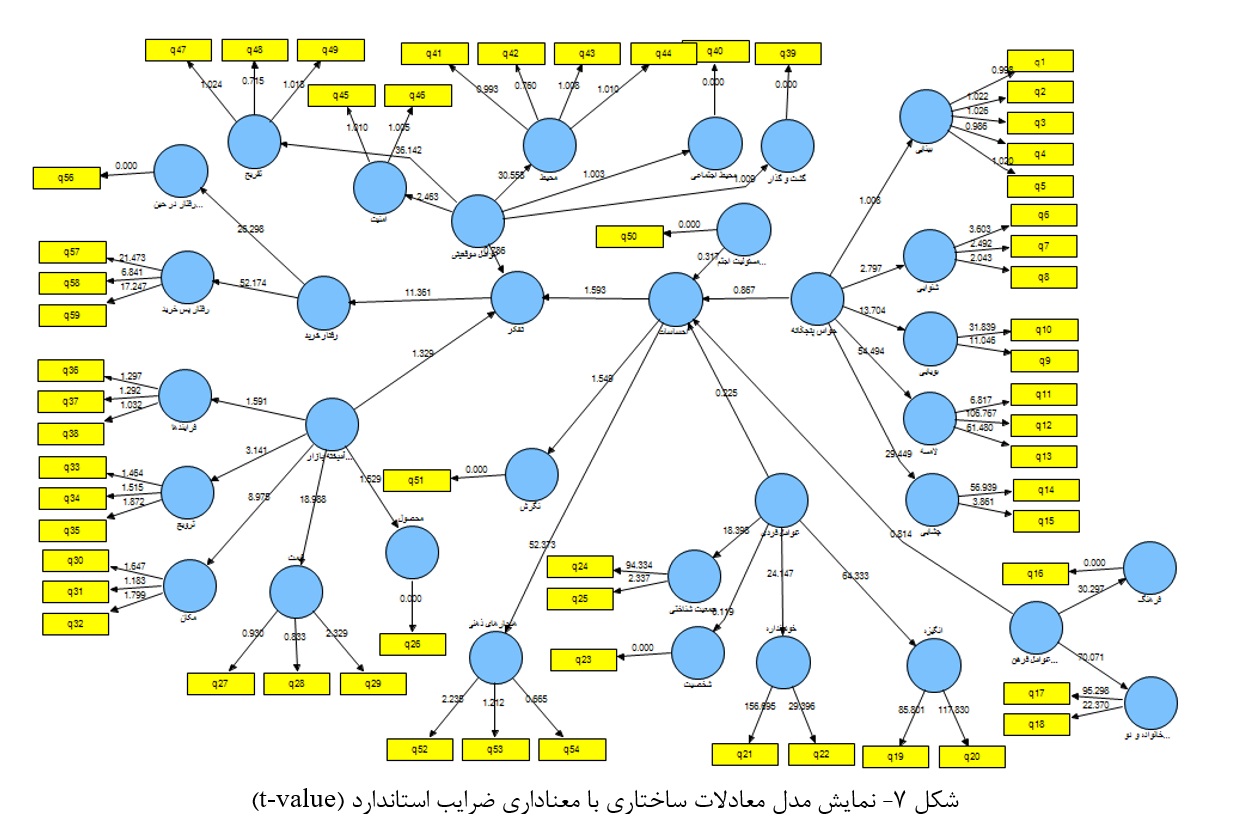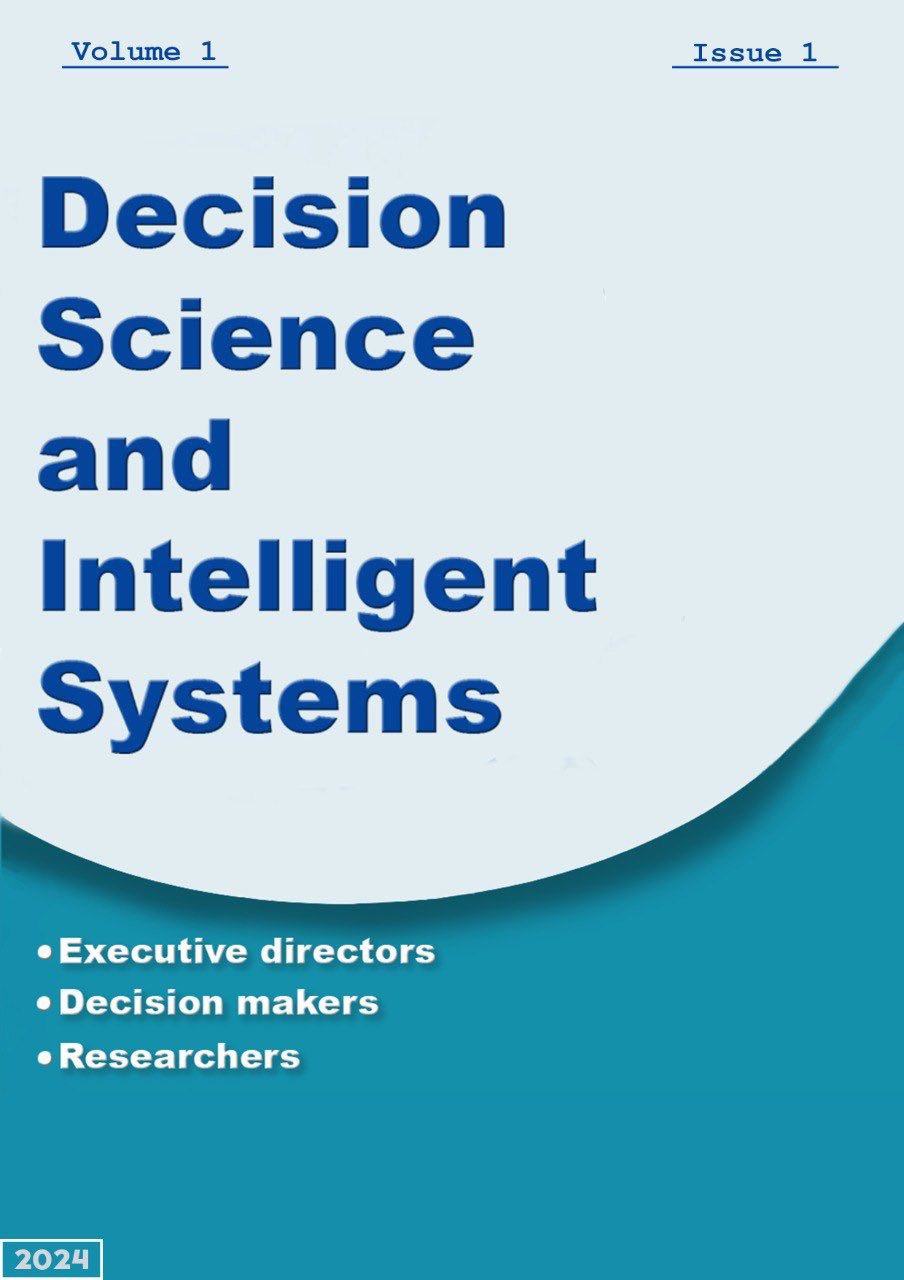Analyzing the Impact of Experiential Marketing on Women's Shopping Behavior: A Combined Study Using Grounded Theory and Structural Equation Modeling
Keywords:
Purchasing behavior model, five senses, sensory marketing, womenAbstract
In this research, the shopping pattern of women based on sensory marketing has been presented. The research method is applied in terms of purpose and exploratory and explanatory in terms of approach. Due to the fact that the present study is of mixed, exploratory and explanatory type, the mixed method was used in two phases, qualitative and quantitative. In the first phase, using inductive approach and using qualitative form through content analysis and application of Grounded Theory, the foundation identified 9 variables and 27 effective components on the pattern of women's purchasing based on sensory marketing in the form of causal conditions, central conditions, field conditions. Intervening conditions, strategies and outcomes. Then, in the second phase, the dimensions and components were quantitatively confirmed and finally the conceptual model developed in the qualitative phase was approved. The required information in the qualitative phase was collected through interviews with 10 experts and experts in marketing and consumer behavior, the number of which was determined by targeted snowball sampling. Also, in the quantitative part, the required data were collected by distributing a researcher-made questionnaire among 51 female customers of Kish commercial centers, which was determined by Cochran method. In this research, for designing and implementing the explained model, the structural equation modeling technique with pls software was used to test the qualitative model. The results of structural equation modeling showed that the five senses at the 95% confidence level have a significant effect on emotions. However, socio-cultural factors and individual and psychological factors do not have a significant effect on emotions. On the other hand, emotions at the 95% confidence level have a significant effect on thinking (intention to buy). Also, marketing mix elements and situational factors at 95% confidence level had a significant effect on thinking; And social responsibilities do not have a significant effect on thinking; However, the intention to buy at the level of 99% confidence has a significant effect on buying behavior.
References
Adinefar, A. R., Mahmoudi, E., & Mehrabi, A. (2023). Presenting a model of factors affecting handwoven carpet export from the perspective of dynamic capabilities and marketing capabilities with emphasis on target customer attitudes. Consumer Behavior Studies, 1(10), 214–239.
Benar, N., Barakhas, H., Karimkhan, F., & Moradi, M. (2018). The effect of sensory marketing on customers’ behavioral intentions through hedonism, place attachment, and trust (Case study: Football schools in Kermanshah). Journal of Consumer Behavior Studies, 5(1), 21–35.
Poursadegh Younjali, M., Eskandarpoor, B., Sattari, F., & Zare, G. (2024). Investigating the effect of relationship marketing, sensory marketing, and supportive marketing on customer loyalty with the mediating role of service quality in Agricultural Bank of Ardabil Province. Proceedings of the 1st National Conference on Management in the Age of Transformations with Emphasis on Technology, Science and Practice, Ardabil, Iran.
Sehat, S., & Cherkhiyan, M. (2014). Marketing and branding in the insurance industry (1st ed.). Tehran: Mehraban Publishing.
Mah Avarpour, N., Hosseinzadeh Shahri, M., Abdolvand, N., & Babaei Zakilaki, M. A. (2021). Rules governing the intention of social network users to participate in crowdsourcing marketing competitions based on the rough set theory approach (Case study: Motosel brand consumers). Consumer Behavior Studies, 8(4), 15–132.
Yavarezadeh, F. (2016). Investigating sensory marketing on consumer purchasing behavior (Case study: Paeez chain restaurants) (Doctoral dissertation). University of Kashan, Kashan, Iran.
Abdul Qader, I. K. (2008). Intention to purchase electronic green products amongst lecturers: An empirical evidence (Master’s thesis). University Sains Malaysia.
Alizadeh, H., Khorramabadi, M., Saberian, H., & Keramati, M. (2024). Qualitative study to propose digital marketing based on customer experience: Considering grounded theory (GT). Business, Marketing, and Finance Open, 1(6), 86–98.
Calderon-Monge, E., & Ribeiro-Soriano, D. (2024). The role of digitalization in business and management: A systematic literature review. Review of Managerial Science, 18(2), 449–491.
Coelho, P. S., Rita, P., & Santos, Z. R. (2018). On the relationship between consumer-brand identification, brand community, and brand loyalty. Journal of Retailing and Consumer Services, 43, 101–110.
Cox, A. D., & Anderson, R. D. (2005). Reassessing the pleasures of store shopping. Journal of Business Research, 58, 250–259.
Dubrovski, D. (2001). The role of customer satisfaction in achieving business excellence. Total Quality Management, 12(7–8), 920–925.
Dwivedi, Y. K., Hughes, L., Wang, Y., Alalwan, A. A., Ahn, S. J., Balakrishnan, J., ... & Wirtz, J. (2023). Metaverse marketing: How the metaverse will shape the future of consumer research and practice. Psychology & Marketing, 40(4), 750–776.
Dwivedi, Y. K., Ismagilova, E., Hughes, D. L., Carlson, J., Filieri, R., Jacobson, J., ... & Wang, Y. (2021). Setting the future of digital and social media marketing research: Perspectives and research propositions. International Journal of Information Management, 59, 102168.
He, C., Yu, S., Han, Q., & de Vries, B. (2019). How to attract customers to buy green housing? Their heterogeneous willingness to pay for different attributes. Journal of Cleaner Production, 230, 709–719.
Helgesen, Q., H˚avold, J. I., & Nesset, E. (2010). Impacts of store and chain images on the quality–satisfaction–loyalty process in petrol retailing. Journal of Retailing and Consumer Services, 17(9), 109–118.
Kim, H., Kim, T., & Shin, S. W. (2009). Modeling roles of subjective norms and eTrust in customers’ acceptance of airline B2C ecommerce websites. Tourism Management, 30, 266–277.
Kim, K., Byon, K. K., Baek, W., & Williams, A. S. (2018). Examining structural relationships among sport service environments, excitement, consumer-to-consumer interaction, and consumer citizenship behaviors. International Journal of Hospitality Management. https://doi.org/10.1016/j.ijhm.2018.10.004
Knowles, J. (2018). The role of brands in business. In J. Knowles, Brands: Visions and values (pp. 21–89). UK: John Wiley & Sons Ltd.
Krishen, A. S., Dwivedi, Y. K., Bindu, N., & Kumar, K. S. (2021). A broad overview of interactive digital marketing: A bibliometric network analysis. Journal of Business Research, 131, 183–195.
Krishna, A., Cian, L., & Sokolova, T. (2016). The power of sensory marketing in advertising. Current Opinion in Psychology, 10, 142–147.
Krishna, A., & Schwarz, N. (2012). Announcement of a special issue in Journal of Consumer Psychology on sensory perception, embodiment, and grounded cognition: Implications for consumer behavior. Journal of Consumer Psychology, 22(2), 161.
Loebnitz, N., Loose, S. M., & Grunert, K. G. (2015). Impacts of situational factors on process attribute uses for food purchases. Food Quality and Preference, 44, 84–91.
Melović, B., Jocović, M., Dabić, M., Vulić, T. B., & Dudic, B. (2020). The impact of digital transformation and digital marketing on the brand promotion, positioning and electronic business in Montenegro. Technology in Society, 63, 101425.
Murray, J. M. (2011). Sensory marketing: Optimizing the sensuality of product. The Singapore Marketer Magazine, Jan–Mar, 33–35.
Pappas, N. (2016). Marketing strategies, perceived risks, and consumer trust in online buying behavior. Journal of Retailing and Consumer Services, 29, 92–103.
Paul, J., Ueno, A., Dennis, C., Alamanos, E., Curtis, L., Foroudi, P., ... & Wirtz, J. (2024). Digital transformation: A multidisciplinary perspective and future research agenda. International Journal of Consumer Studies, 48(2), e13015.
Pookulangara, S., Howley, J., & Xiao, G. (2011). Explaining consumers’ channel-switching behavior using the theory of planned behavior. Journal of Retailing and Consumer Services, 18(4), 311–321.
Rahman, M. S., Bag, S., Hossain, M. A., Fattah, F. A. M. A., Gani, M. O., & Rana, N. P. (2023). The new wave of AI-powered luxury brands online shopping experience: The role of digital multisensory cues and customers’ engagement. Journal of Retailing and Consumer Services, 72, 103273.
Samieifard, M., Abolghasemian, M., & Pourghader Chobar, A. (2024). The impact of innovation, performance, and e-commerce development in the online shop on online marketing: A case study in the industry. Interdisciplinary Journal of Management Studies, 18(1), 1–17.
Schmitt, B., & Simonson, A. (1997). Marketing aesthetics. New York: The Free Press.
Shen, H., & Tsuifang, H. (2011). The effect of atmosphere on customer perceptions and customer behavior responses in chain store supermarkets. Department of Business Administration, National Dong Hwa University, Taiwan.
Skandalis, A., Byrom, J., & Banister, E. (2019). Experiential marketing and the changing nature of extraordinary experiences in post-postmodern consumer culture. Journal of Business Research, 97, 43–50.
Wang, R., Xu, S., Li, S., & Pang, Q. (2024). Research on influence mechanism of consumer satisfaction evaluation behavior based on grounded theory in social e-commerce. Systems, 12(12), 572.
Yoon, S.-J., & Park, J. (2012). Do sensory ad appeals influence brand attitude? Journal of Business Research, 65(11), 1534–1542.

Downloads
Published
Submitted
Revised
Accepted
Issue
Section
License
Copyright (c) 2025 ژیلا وهابزاده, فرزاد آسایش, عبداله نعامی (نویسنده)

This work is licensed under a Creative Commons Attribution-NonCommercial 4.0 International License.





